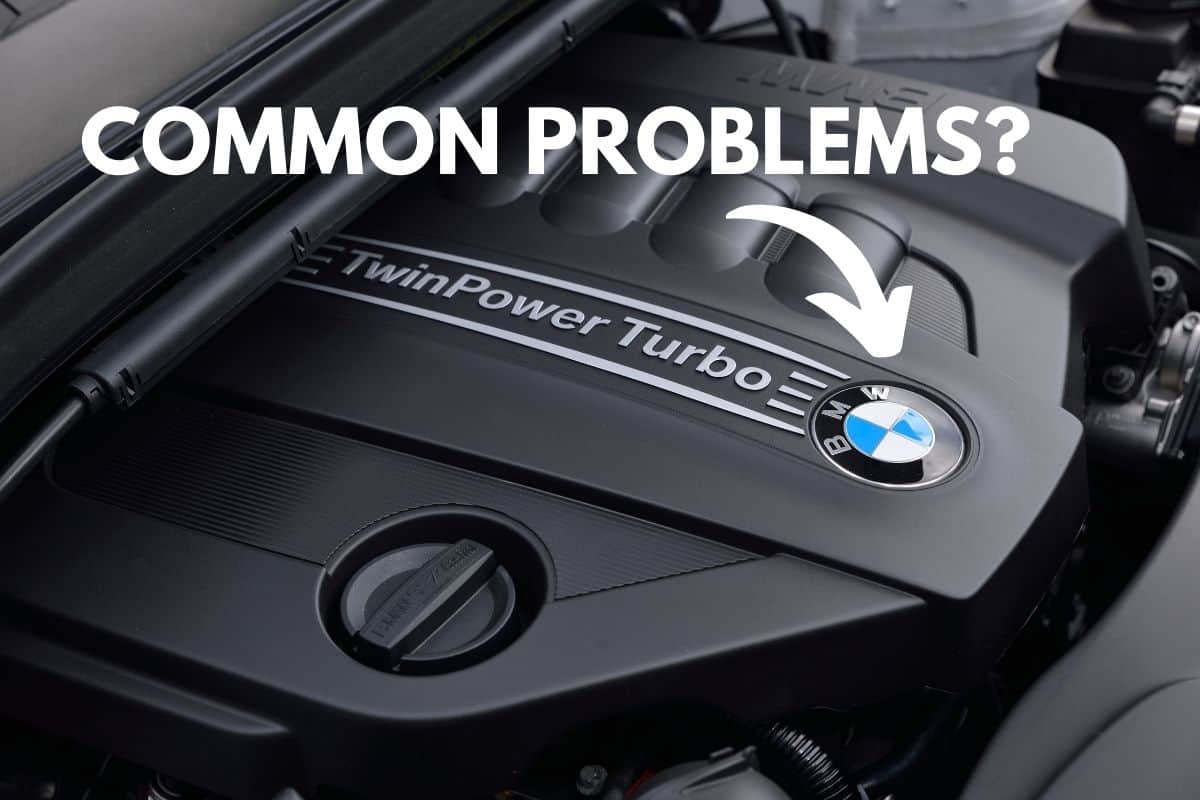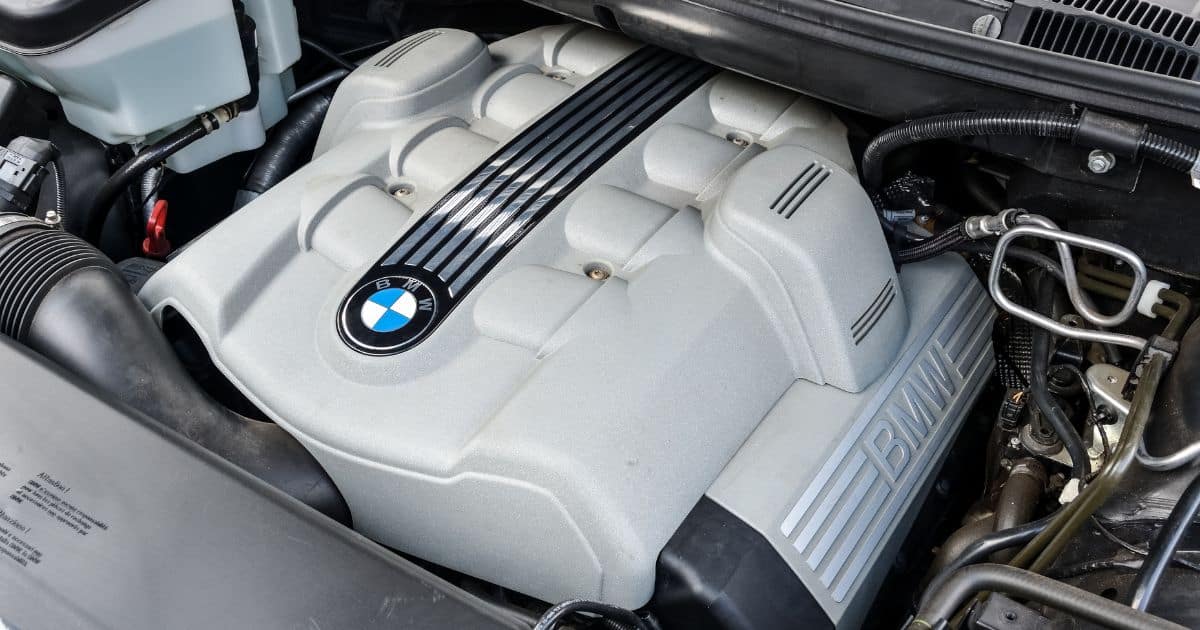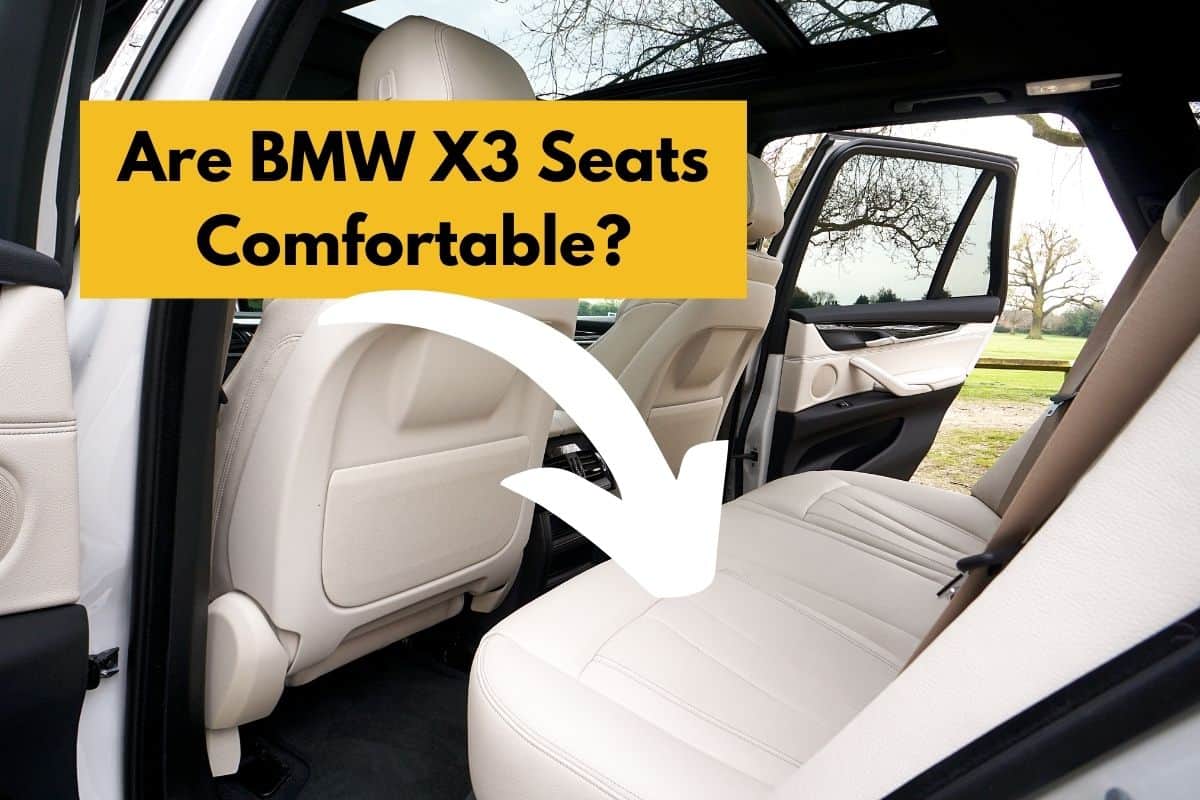BMW X3 Years to Avoid for a Smarter Purchase
The BMW X3 is a popular compact luxury SUV that has been around since 2004. While it has been a reliable and enjoyable vehicle for many drivers, there are certain model years that are best avoided due to their common problems and expensive repairs. In this article, we will take a closer look at the BMW X3 years to avoid and why.

While researching the BMW X3, be sure to bookmark these popular articles to learn more: What Year BMW X3 Is The Most Reliable?, Worth It To Buy A Used BMW X3?, and Which Used BMW SUV is the Most Reliable?
According to industry reviews, NHTSA statistics, and reported complaints, the worst model years of the BMW X3 are 2019, 2015, 2013, 2011, 2008, 2007, 2006, 2005, and 2004. These model years are known for various issues such as engine problems, transmission failures, and electrical malfunctions.
On the other hand, the best BMW X3 model years are 2023, 2022, 2021, 2020, 2018, 2017, 2016, 2014, 2012, and 2010. These model years are praised for their reliability, performance, and features.
If you are in the market for a used BMW X3, it is important to do your research and know which model years to avoid.
While the BMW X3 is a great vehicle overall, certain years have had more problems than others. By being aware of these issues, you can make a more informed decision and avoid costly repairs down the road.
BMW X3 Overview
The BMW X3 is a luxury SUV that has been in production since 2003. It is a versatile and stylish vehicle that has gained popularity over the years.
The X3 is available in three generations, each with its own unique features and specifications.
First Generation
The first generation of the BMW X3 was produced from 2003 to 2010. It was a compact SUV that was designed to be sporty and agile.
The first-generation X3 was available in two engine options: a 2.5-liter inline-six engine and a 3.0-liter inline-six engine. The X3 was praised for its handling and performance but had some reliability issues.
Second Generation
The second generation of the BMW X3 was produced from 2011 to 2017. It was larger than the first generation and had a more refined design.
The second-generation X3 was available in three engine options: a 2.0-liter turbocharged four-cylinder engine, a 3.0-liter turbocharged inline-six engine, and a diesel engine.
The X3 was praised for its luxurious interior and impressive performance, but it had some reliability issues.
Third Generation
The third generation of the BMW X3 was produced from 2018 to present. It is larger than the second generation and has a more modern design.
The third-generation X3 is available in two engine options: a 2.0-liter turbocharged four-cylinder engine and a 3.0-liter turbocharged inline-six engine. The X3 has received high praise for its comfortable ride and spacious interior.
Here is a table to illustrate the engine options available in each generation:
| Generation | Engine Options |
|---|---|
| First | 2.5L I6, 3.0L I6 |
| Second | 2.0L turbo I4, 3.0L turbo I6, diesel |
| Third | 2.0L turbo I4, 3.0L turbo I6 |
Overall, the BMW X3 is a popular luxury SUV that has had some reliability issues in the past. The third generation seems to have addressed some of these issues, but it is important to do your research before purchasing a used X3.
BMW X3 Reliability

Reliability Ratings
The BMW X3 is a popular luxury compact SUV. However, some model years have proven to be less reliable than others.
According to Consumer Reports, the X3 has an overall reliability rating of 2 out of 5, which is below average. RepairPal rates the X3 as 2.5 out of 5 for reliability, which is also below average.
Problems to Watch Out For
The 2013 BMW X3 is noted as the worst year for the X3 series. Drivers have reported over 300 complaints to the National Highway Traffic Safety Administration (NHTSA), most requiring expensive fixes.
The 2014 BMW X3 also has plenty of issues on its own, with most of the owner’s complaints directed towards body hardware.
Here is a table summarizing the reliability ratings and common problems of the BMW X3:
| Model Year | Reliability Rating | Common Problems |
|---|---|---|
| 2013 | Below Average | Over 300 NHTSA complaints, expensive fixes |
| 2014 | Below Average | Body hardware issues |
It is important to note that not all X3s of these model years will experience these problems. However, if you want to purchase a used X3, it is recommended to avoid these model years or thoroughly inspect the vehicle before purchasing.
Overall, while the BMW X3 is a popular luxury compact SUV, it is important to consider the reliability ratings and common problems of the specific model year before making a purchase.
Learn More: Read our full review of BMW Reliability across the full brand of vehicles.
BMW X3 Performance
The BMW X3 is a luxury compact SUV that is designed to deliver a comfortable ride and impressive performance.
When it comes to performance, the X3 has a lot to offer. In this section, we will take a closer look at the engine options, fuel economy, and handling of the BMW X3.
Engine Options
The BMW X3 comes with a range of engine options that offer different levels of power and performance. Here is a breakdown of the engine options available for the X3:
| Engine Option | Power Output | Fuel Economy |
|---|---|---|
| 2.0L Turbocharged 4-Cylinder | 248 horsepower | 25 mpg combined |
| 3.0L Turbocharged 6-Cylinder | 382 horsepower | 23 mpg combined |
As you can see, the X3 offers impressive power output and decent fuel economy.
However, it is important to note that some X3 models have experienced issues with the fuel pressure valve and camshaft, which can lead to decreased performance and increased repair costs.
Learn More: Here’s how long BMW X3 Engines Last in the real world!

Fuel Economy
The BMW X3 is designed to deliver a balance of power and fuel efficiency. The X3’s fuel economy varies depending on the engine option and other factors, such as driving conditions and vehicle maintenance. Here is a breakdown of the X3’s fuel economy for each engine option:
- 2.0L Turbocharged 4-Cylinder: 25 mpg combined (22 city/29 highway)
- 3.0L Turbocharged 6-Cylinder: 23 mpg combined (20 city/27 highway)
In general, the X3’s fuel economy is competitive for its class. However, some drivers have reported lower fuel efficiency than advertised, which may be due to issues with the fuel pressure valve or other factors.
Handling
The BMW X3 is known for its agile handling and responsive steering. The X3’s suspension system is designed to provide a comfortable ride while still delivering precise handling and control.
However, some X3 models have experienced issues with the suspension and steering, which can lead to decreased handling performance and increased repair costs.
In conclusion, the BMW X3 offers impressive performance, fuel economy, and handling.
However, it is important to be aware of potential issues with the fuel pressure valve, camshaft, suspension, and steering, which can impact performance and repair costs.
BMW X3 Interior
The BMW X3 boasts a well-crafted interior with high-quality materials and a modern design. The cabin is spacious, with plenty of headroom and legroom for both front and rear passengers.
Let’s take a closer look at the Comfort, Cargo, and Technology features of the BMW X3 interior.

Comfort
The BMW X3 offers a comfortable ride with supportive seats that are highly adjustable. The front seats are heated and can be upgraded to ventilated seats with a massage function.
The rear seats are comfortable as well, offering ample legroom and a reclining function. The cabin is well-insulated, keeping the noise level low, and the climate system is effective in keeping the temperature comfortable.
Cargo
The BMW X3 provides a generous cargo space of 28.7 cubic feet behind the rear seats, and it can be expanded to 62.7 cubic feet by folding down the rear seats.
The cargo area is easily accessible with a power liftgate and a low load floor. The X3 also comes with a cargo cover, tie-downs, and a cargo net to keep your items secure.
Here is a table to compare the cargo space of the BMW X3 with its competitors:
| Model | Cargo Space |
|---|---|
| BMW X3 | 28.7-62.7 cu ft |
| Audi Q5 | 25.1-53.1 cu ft |
| Mercedes-Benz GLC | 19.4-56.5 cu ft |
Technology
The BMW X3 comes with a standard 10.25-inch touchscreen display that is easy to use and responsive. The infotainment system includes Apple CarPlay, Android Auto, and a 12-speaker audio system.
The X3 also features a digital instrument cluster and a head-up display that projects key information onto the windshield. The cabin is equipped with several USB ports, a wireless charging pad, and a Wi-Fi hotspot.
The BMW X3 interior offers a comfortable and spacious cabin with plenty of cargo room and advanced technology features. The climate system is effective, and the seats are supportive and adjustable.
The X3’s infotainment system includes Apple CarPlay, and the cabin is equipped with several USB ports and a wireless charging pad.
Share Your Insights With US
Did we forget something, get something right (or wrong)? We’d love to hear your insights! Share your automotive experiences based on our article in the comments below. Your input enriches our community’s knowledge. Thanks in advance for sharing!
BMW X3 Exterior
The BMW X3 is known for its sleek and stylish exterior, but there are a few things to keep in mind when it comes to the utility, body hardware, and exterior accessories.
Utility
One of the standout features of the BMW X3 is its tailgate, which offers easy access to the cargo area. However, some drivers have reported issues with the tailgate failing to open or close properly. If you’re considering a used X3, be sure to test the tailgate thoroughly to ensure it’s functioning properly.
Body Hardware
When it comes to body hardware, the X3 has a few areas that may require attention. The door handles, for example, have been known to break or become loose over time.
The windshield wipers can also be prone to streaking or skipping, which can be a safety hazard in inclement weather.
Exterior Accessories
If you’re looking to add some extra flair to your X3, a variety of exterior accessories are available. However, it’s important to note that not all accessories are created equal.
Some aftermarket products may not fit properly or may cause damage to the vehicle’s paint or body.
Sticking with genuine BMW accessories is always best to ensure a perfect fit and maximum durability.
Here’s a table summarizing some common exterior accessories for the BMW X3:
| Accessory | Description |
|---|---|
| Roof rack | Allows for additional storage on top of the vehicle |
| Running boards | Provides easier access to the cabin and adds a stylish touch |
| Mud flaps | Helps protect the vehicle from mud, rocks, and other debris |
| Spoiler | Enhances the vehicle’s aerodynamics and adds a sporty look |
Overall, the BMW X3’s exterior is well-designed and stylish, but keeping an eye on certain areas like the tailgate, door handles, and windshield wipers is important.
When it comes to adding accessories, stick with genuine BMW products to ensure the best fit and durability.
BMW X3 Safety
When it comes to safety, the BMW X3 has received mixed reviews over the years. While it has some impressive safety features, there have also been some safety issues that drivers should be aware of.
Safety Features
The BMW X3 comes with several safety features, including:
- Anti-lock brakes
- Stability control
- Front-impact airbags
- Side-impact airbags
- Overhead airbags
- Knee airbags
- Pretensioners
- Security system
- Panic alarm
These features are designed to keep drivers and passengers safe in the event of an accident.
Additionally, the X3 has received a full five-star rating for overall safety from the National Highway Traffic Safety Administration (NHTSA).
Recalls
Despite the X3’s impressive safety features, some safety issues have led to recalls. Some of the most notable recalls include:
- Brake failure: In 2018, BMW recalled over 100,000 X3s due to a potential brake failure issue. The recall affected X3s from the 2011-2017 model years.
- Stalling: In 2019, BMW recalled over 100,000 X3s due to a potential stalling issue. The recall affected X3s from the 2011-2016 model years.
- Unintended sudden acceleration: In 2013, BMW recalled over 500,000 vehicles, including the X3, due to a potential issue with unintended sudden acceleration.
- False warning signals: In 2017, BMW recalled over 19,000 X3s due to a potential issue with displaying false warning signals on the instrument panel.
Warranty
The BMW X3 has a limited warranty covering the vehicle for four years or 50,000 miles, whichever comes first.
Additionally, the X3 comes with a powertrain warranty that covers the engine, transmission, and other related components for four years or 50,000 miles.
Overall, while the BMW X3 has some impressive safety features, there have been some safety issues that drivers should be aware of.
It’s important to stay up-to-date on any recalls and to have any potential issues addressed as soon as possible.
BMW X3 Competitors
When it comes to luxury compact SUVs, the BMW X3 has some tough competition. The Audi Q5 and Mercedes-Benz GLC-Class are two of the most notable rivals to the BMW X3.
Let’s take a closer look at how these competitors stack up against the BMW X3.
Audi Q5

The Audi Q5 is a popular choice in the luxury compact SUV segment. It boasts a comfortable and spacious interior, a smooth ride, and a variety of engine options. However, when compared to the BMW X3, the Q5 falls short in a few key areas.
| Entity | BMW X3 | Audi Q5 |
|---|---|---|
| Price | Starts at $43,000 | Starts at $44,100 |
| Horsepower | 248-382 hp | 261-349 hp |
| Fuel Economy (city/highway) | 23/29 mpg | 22/28 mpg |
| Cargo Space | 28.7 cubic feet | 25.1 cubic feet |
While the Q5 has a slightly higher starting price than the X3, it offers less horsepower and cargo space. Additionally, the Q5’s fuel economy is slightly lower than the X3’s. Overall, the BMW X3 is a better value for the money.
Mercedes-Benz GLC-Class
The Mercedes-Benz GLC-Class is another popular choice in the luxury compact SUV segment.
It offers a comfortable and luxurious interior, a smooth ride, and a variety of engine options. However, like the Audi Q5, the GLC-Class falls short when compared to the BMW X3.
| Entity | BMW X3 | Mercedes-Benz GLC-Class |
|---|---|---|
| Price | Starts at $43,000 | Starts at $43,200 |
| Horsepower | 248-382 hp | 255-503 hp |
| Fuel Economy (city/highway) | 23/29 mpg | 22/28 mpg |
| Cargo Space | 28.7 cubic feet | 19.4 cubic feet |
While the GLC-Class offers more horsepower than the X3, it has less cargo space and a slightly lower fuel economy.
Additionally, the GLC-Class has a higher starting price than the X3. Overall, the BMW X3 is a better value for the money.
Rivals
While the Audi Q5 and Mercedes-Benz GLC-Class are two of the most notable rivals to the BMW X3, several other luxury compact SUVs are worth considering.
Some of the top rivals to the BMW X3 include:
Each of these competitors has its own unique strengths and weaknesses. However, when compared to the BMW X3, they all fall short in one way or another.
Ultimately, the BMW X3 is the best choice for those seeking a luxury compact SUV that offers a winning combination of performance, comfort, and value.
Read Our Popular BMW comparison articles:
BMW X3 Conclusion
In conclusion, when it comes to buying a used BMW X3, it is important to do your research and be aware of the potential issues that may arise with certain model years.
While the BMW X3 is a luxury vehicle that offers a great driving experience, some model years have been known to have expensive problems that can be a headache for owners.
According to various sources, including Car Complaints and MotorAudit, the BMW X3 years to avoid are 2007, 2012, 2013, 2014, and 2019.
These model years have been reported to have various mechanical problems ranging from transmission malfunctioning to airbag defects.
If you are looking to purchase a used BMW X3, it is recommended to check the Customer Satisfaction Score of the dealership you are considering.
This score can give you an idea of the dealership’s reputation and customer satisfaction with their purchases.
Additionally, it is important to keep in mind that owning a luxury vehicle like the BMW X3 can come with higher maintenance and repair costs.
Budgeting accordingly and considering purchasing a warranty or extended warranty to help cover these costs is recommended.
Here is a table summarizing the BMW X3 years to avoid and the most common problems reported:
| Model Year | Most Common Problems |
|---|---|
| 2007 | Transmission Failure, Airbag Defects |
| 2012 | Engine Failure, Power Steering Issues |
| 2013 | Broken Timing Chain Guide, Engine Failure |
| 2014 | Engine Failure, Power Steering Issues |
| 2019 | Transmission Failure, Electrical Problems |
Overall, while the BMW X3 can be a great car to drive, it is important to do your research and be aware of the potential issues that may arise with certain model years.
Being informed and taking the necessary precautions can help ensure a positive ownership experience with your BMW X3.
